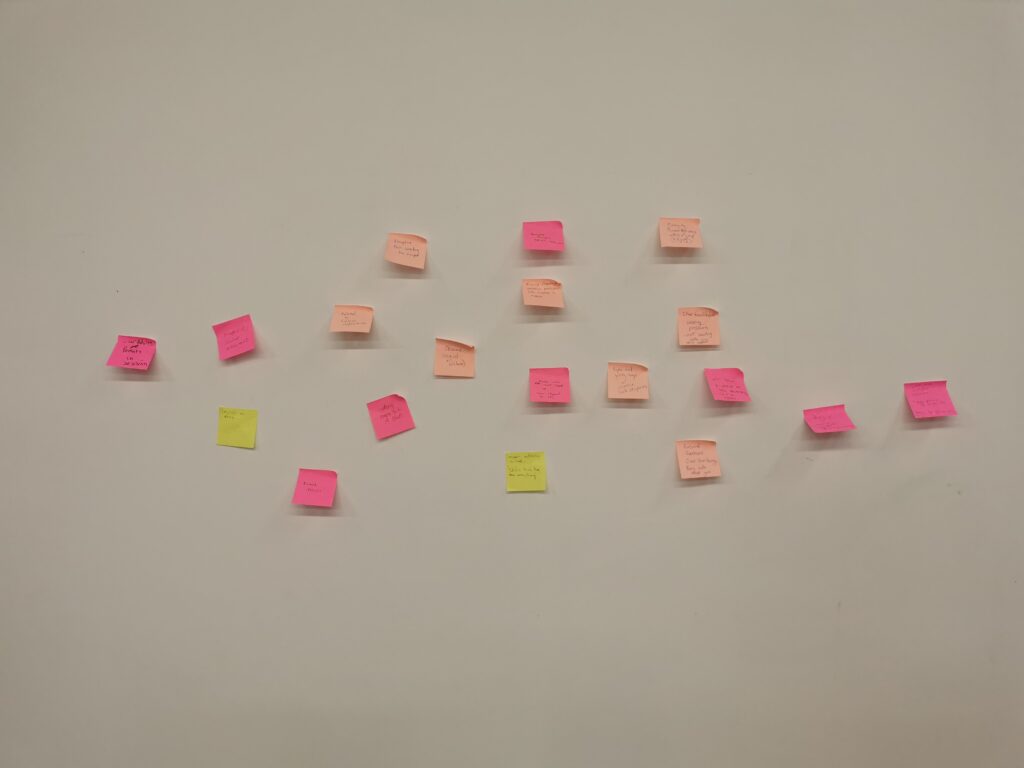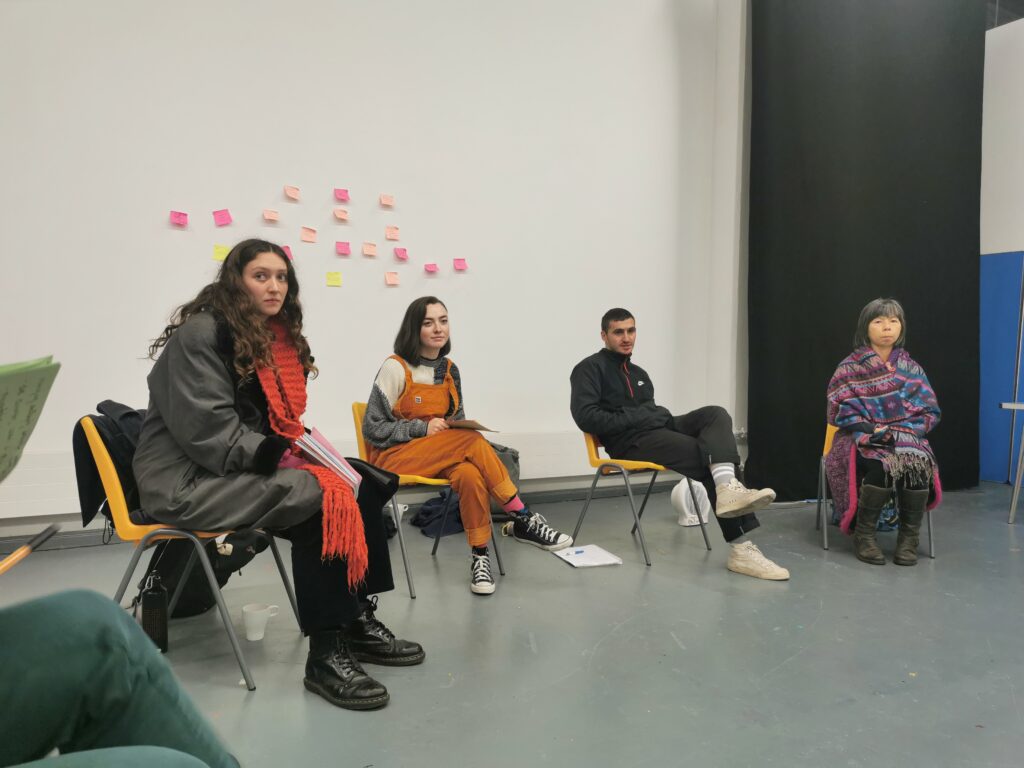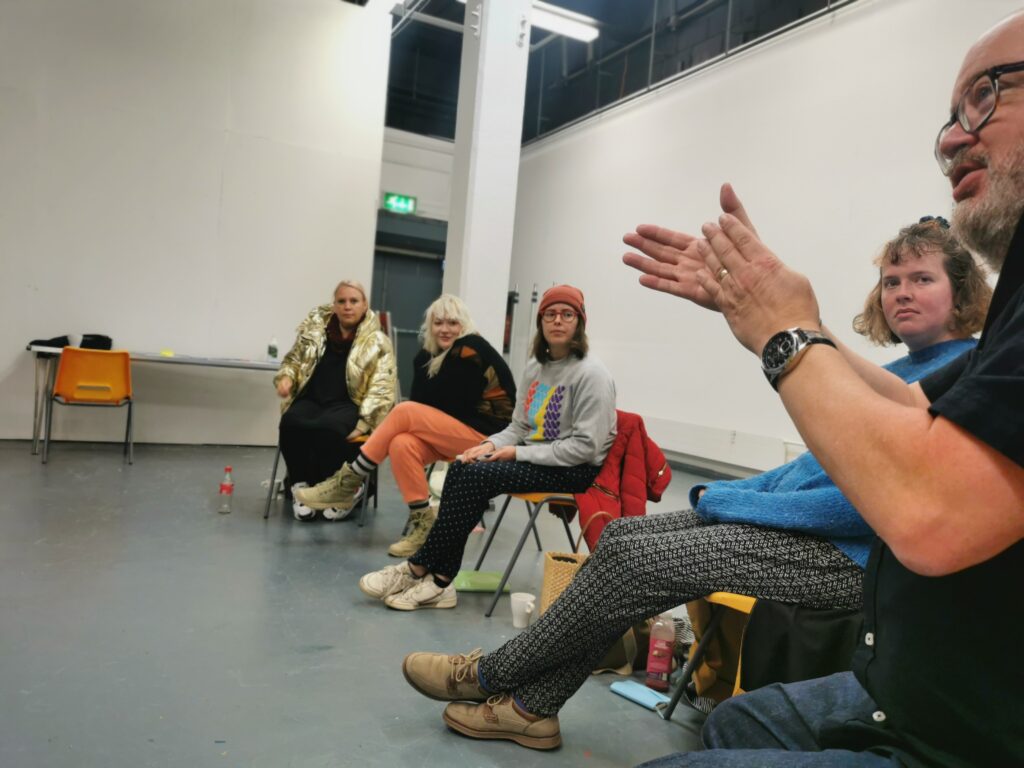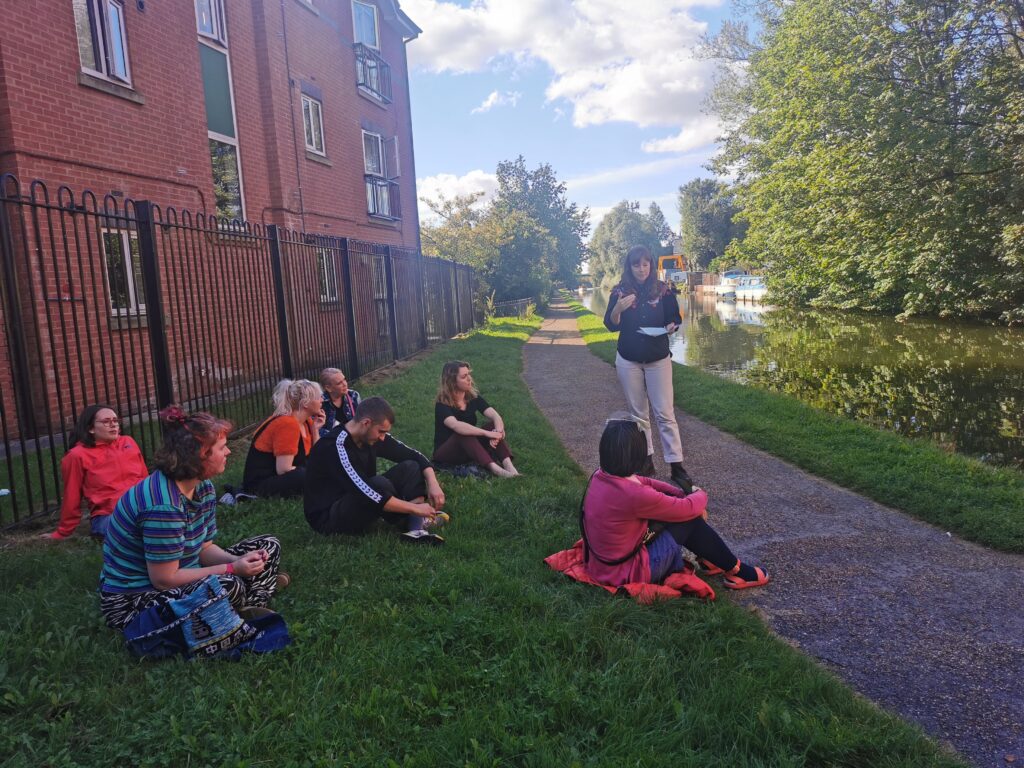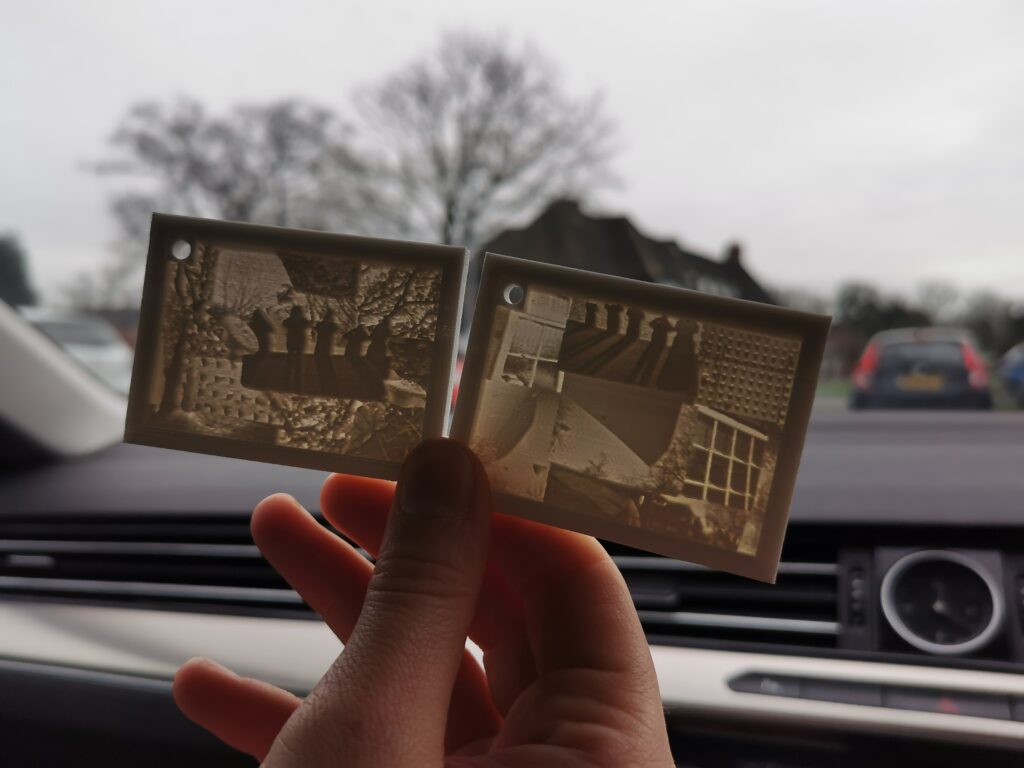 Yesterday was session 4 out of 8 workshops we are delivering for Ashcroft School in Cheadle, as part of our involvement in the Making of Us programme. So we’re now halfway through, an apt point to do some reflection – with the young people and between ourselves as facilitators.
Yesterday was session 4 out of 8 workshops we are delivering for Ashcroft School in Cheadle, as part of our involvement in the Making of Us programme. So we’re now halfway through, an apt point to do some reflection – with the young people and between ourselves as facilitators.
This session should have taken place during the last week of the Autumn term but Covid enforced a delay. I think this had an impact on how it went and where we’re at more generally. It’s now around a month since we saw the group and this was only their third day back at school. They didn’t seem enthused.
Our session was structured around reflection – casting our minds back to what we’d done in sessions 1-3 and looking forward to possible activities for the remaining four weeks. Activities so far have been a photo walk with disposable cameras, followed by collaging using the prints from those cameras. We have also done light painting and Jamie-Lee made lithophanes/3D prints out of the group’s collages – which they saw for the first time yesterday and could take home to keep.

We looked at the prints from light painting and gave out the lithophanes to the members of the group who were present (two were not there). We then played a game Jamie had come up with to make the reflective process more fun – it involved an elastic band attached to four strings. Four people had to work together to control the band and to pick up paper cups. Under the cups were post-it notes with prompts. We hoped everyone would contribute their thoughts and help us shape the rest of the project.
Of course there’s theory and there’s practice, and things do not always work out how you hope. The game was good fun and the group seemed to enjoy it. A few thoughts came out of it but it felt like getting blood out of a stone at times. Group members are not the most forthcoming with their thoughts and at times it felt like we and the teacher were in danger of putting words in their mouths, which is not what we wanted to happen. But what to do when a young person shrugs and says ‘I dunno’ to everything? It’s a really tricky one.
The energy levels in our group fluctuate quite wildly during our 90 minute sessions. Someone can start off quite engaged and apparently into it and then five minutes later they’ve left the room, never to return. Some participants stay but fold into themselves and stop engaging. They make themselves small. This is a challenge for us as facilitators – I am not someone who is very experienced (or naturally very good) with teenagers – let alone those with additional needs. It all gave me a lot of food for thought.
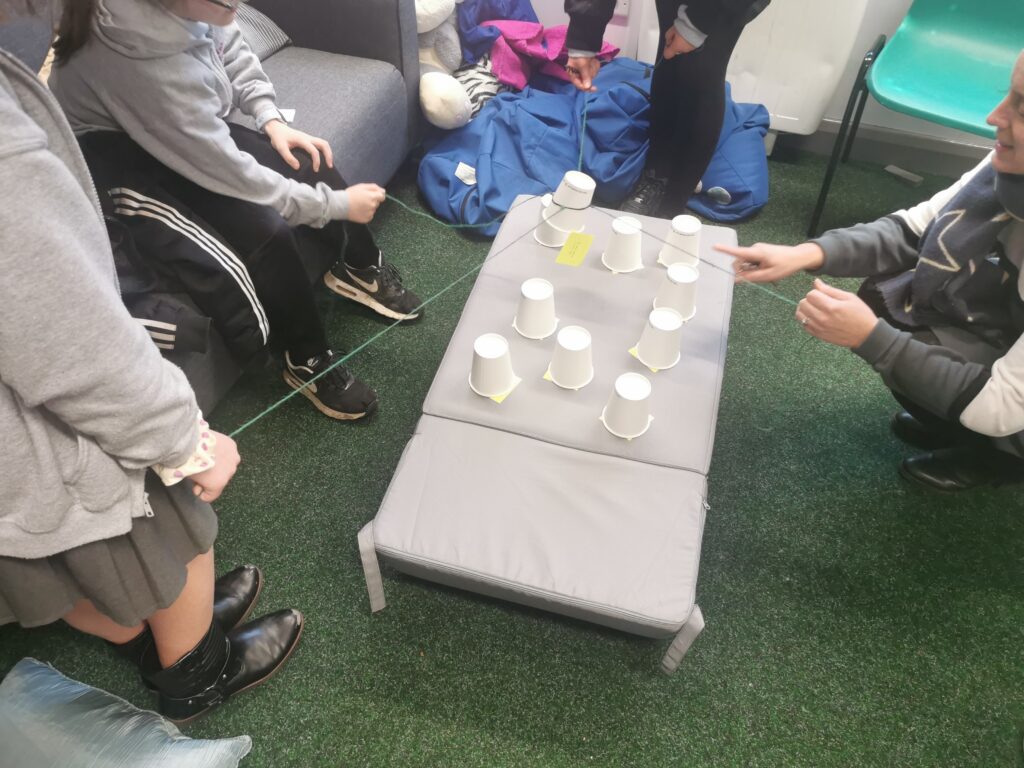
How to ensure we are designing our sessions in a way which works for these participants? Reflection is great and important but I came away feeling somewhat at sea, since the activities that some people had enjoyed were those which others had not enjoyed at all. Which direction to go in next?
This is all something we are now working on and we have some ideas, some of which we want to try for ourselves while we have this chance and others we are designing especially for them.
But some other points struck me as relevant. One weakness for how it went is that we’ve had a long break, worsened by Covid forcing us to postpone our last session. That has broken the flow which we’d built up so far. One participant who had got really involved in the first three sessions and seemed to get a lot out of it – particularly the last workshop on light painting – has now decided he wants to drop it altogether, which is a shame. I wonder if that would have happened if we’d managed to do one long uninterrupted block of sessions.
This is not to say it’s all negative. We have had some genuine moments where it feels like we are connecting with the young people in our group and I can see they are enjoying aspects of what we’re doing. It’s an interesting and challenging journey to walk the path of meeting their needs in a genuine way, given the limitations of the small and unpredictable spaces we are being given to work with and all the other external dramas which can be happening around us at the school.
Next week we plan to do something more active which involves an acceptable level of mess – and to introduce the incentive of earning sweets or chocolate for engaging in our sessions. Hopefully this will make it feel less like ‘school’ and more like something fun and creative that they are happy to be part of. Fingers crossed.
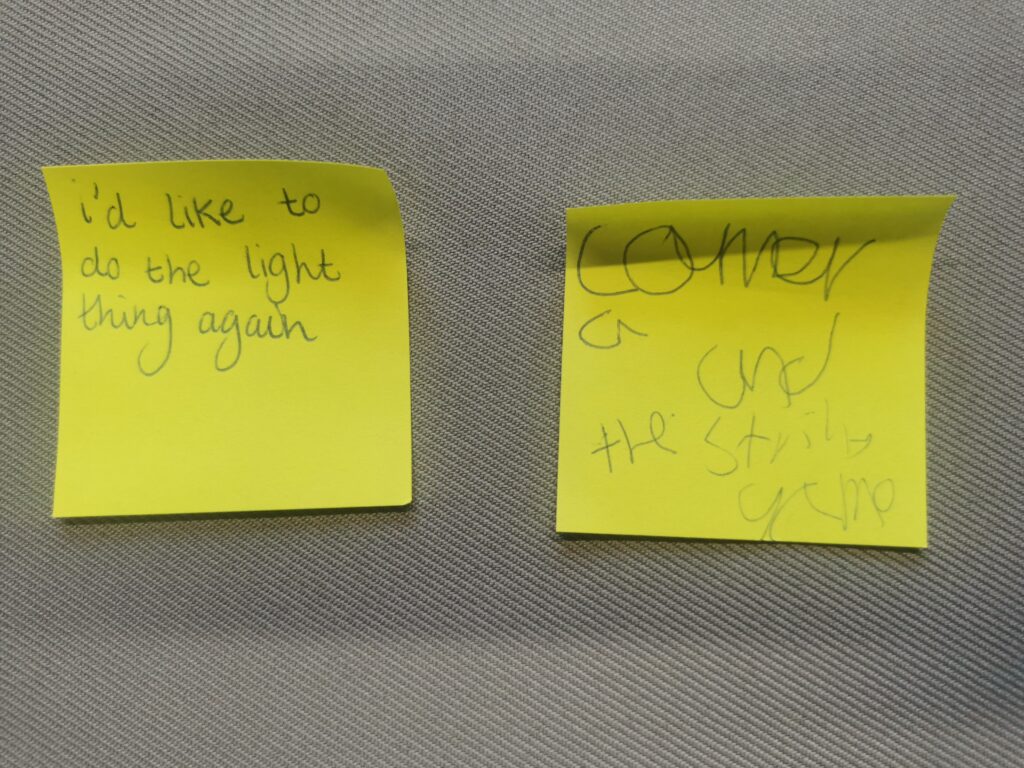
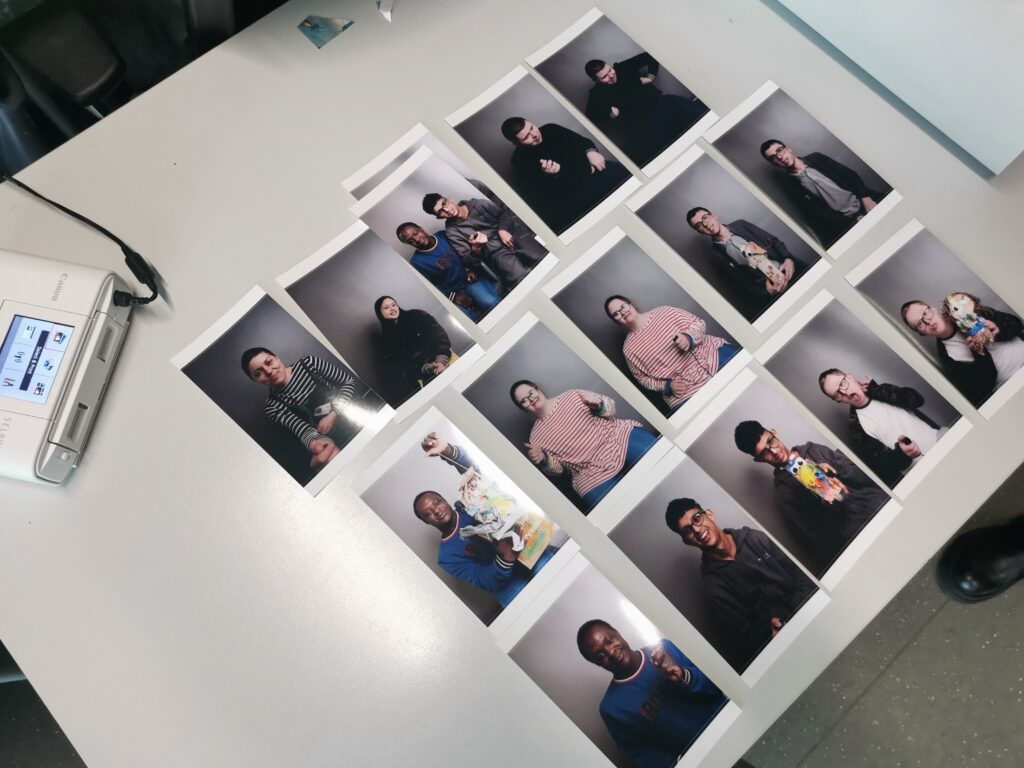
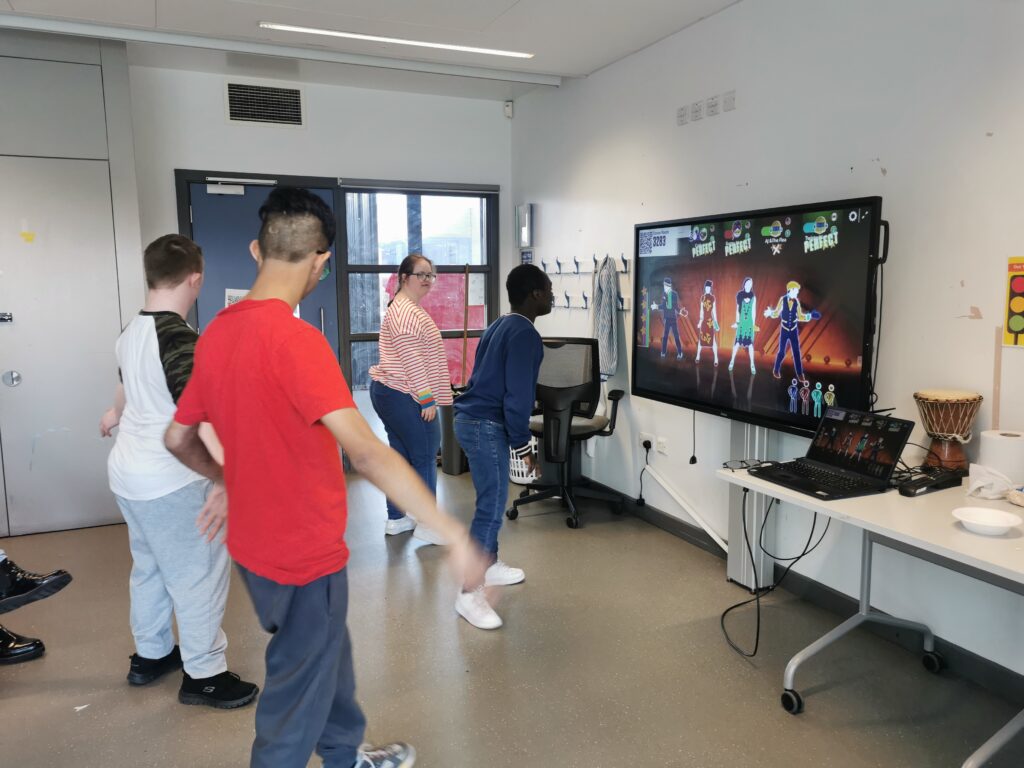
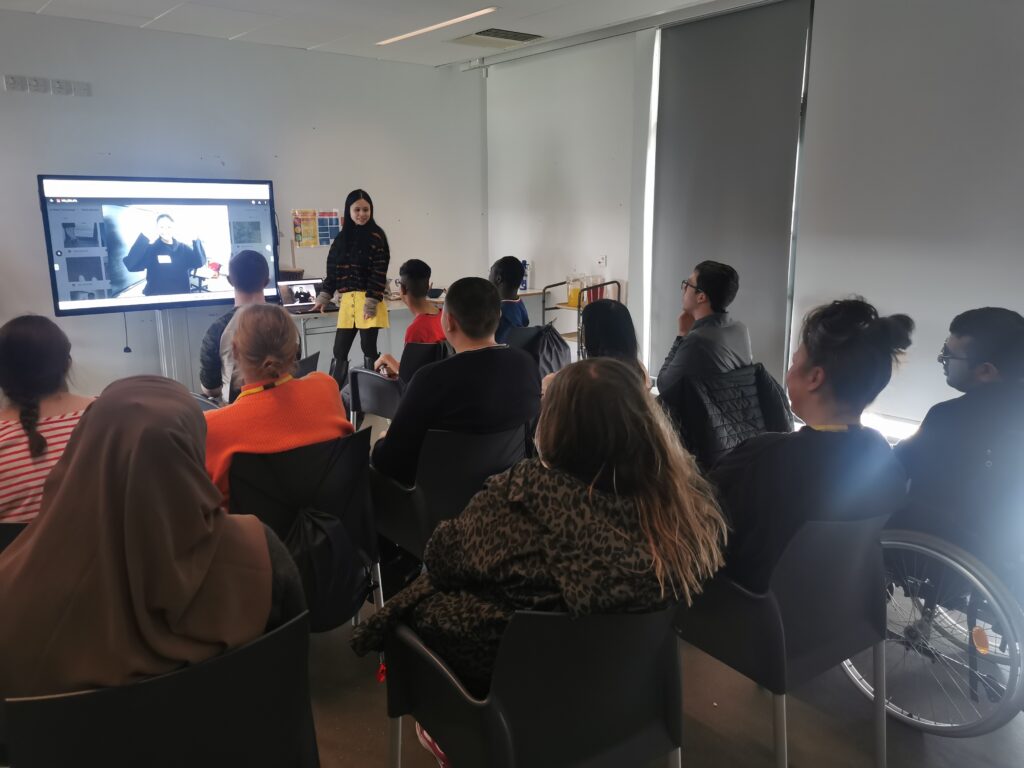
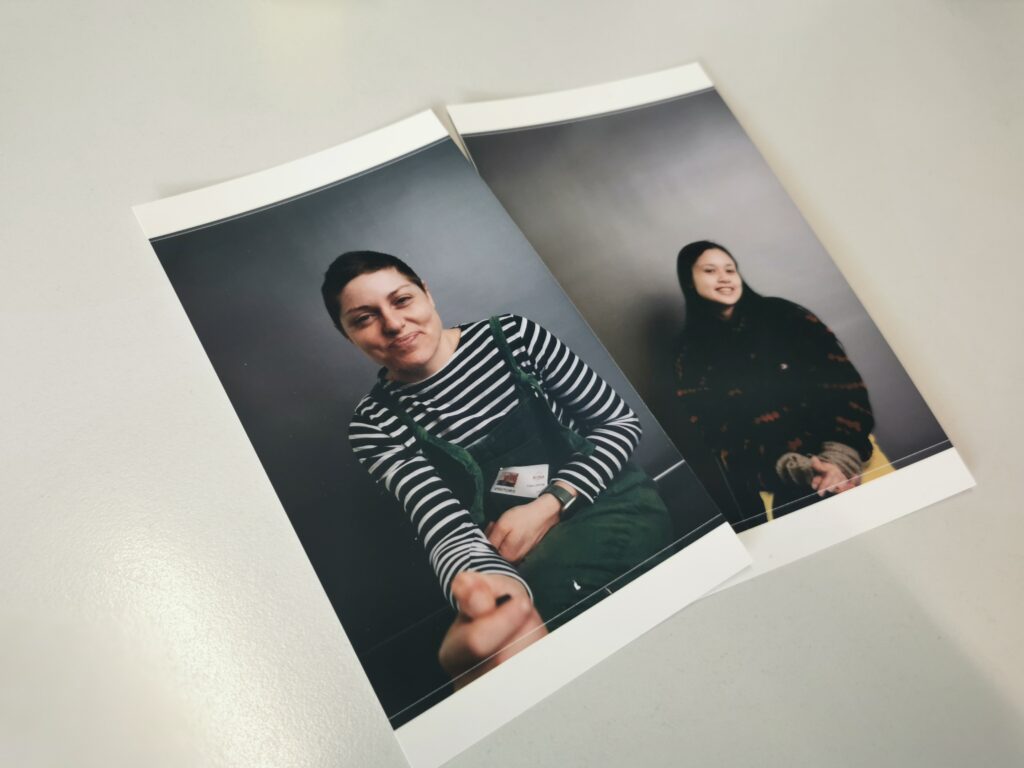
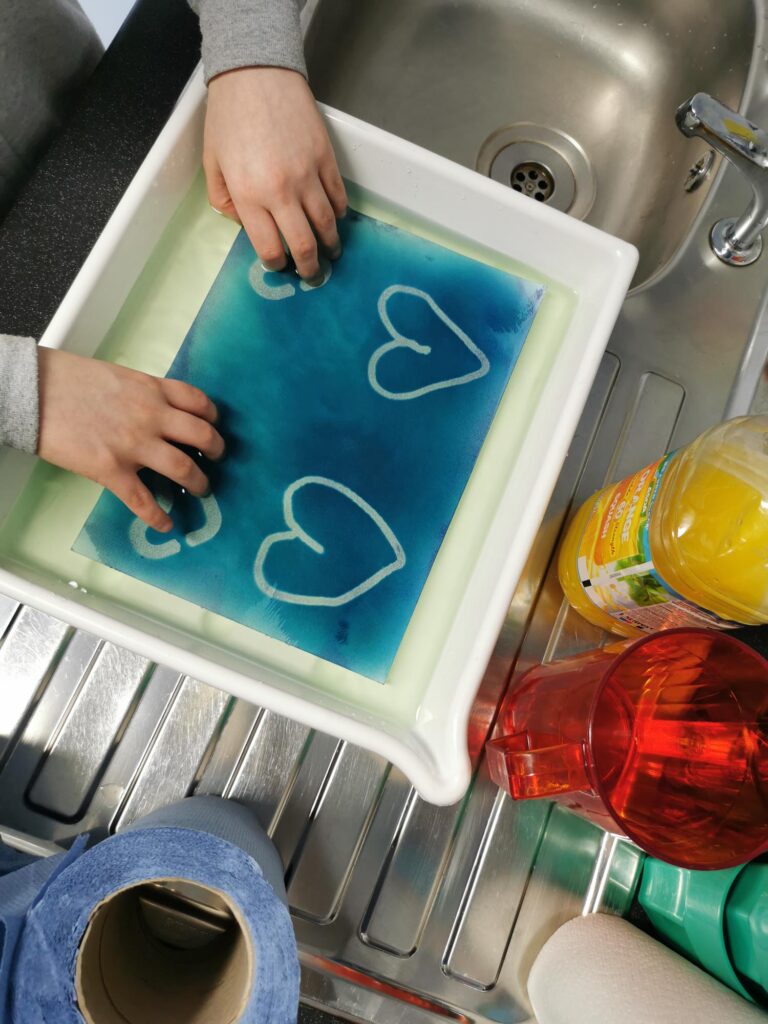







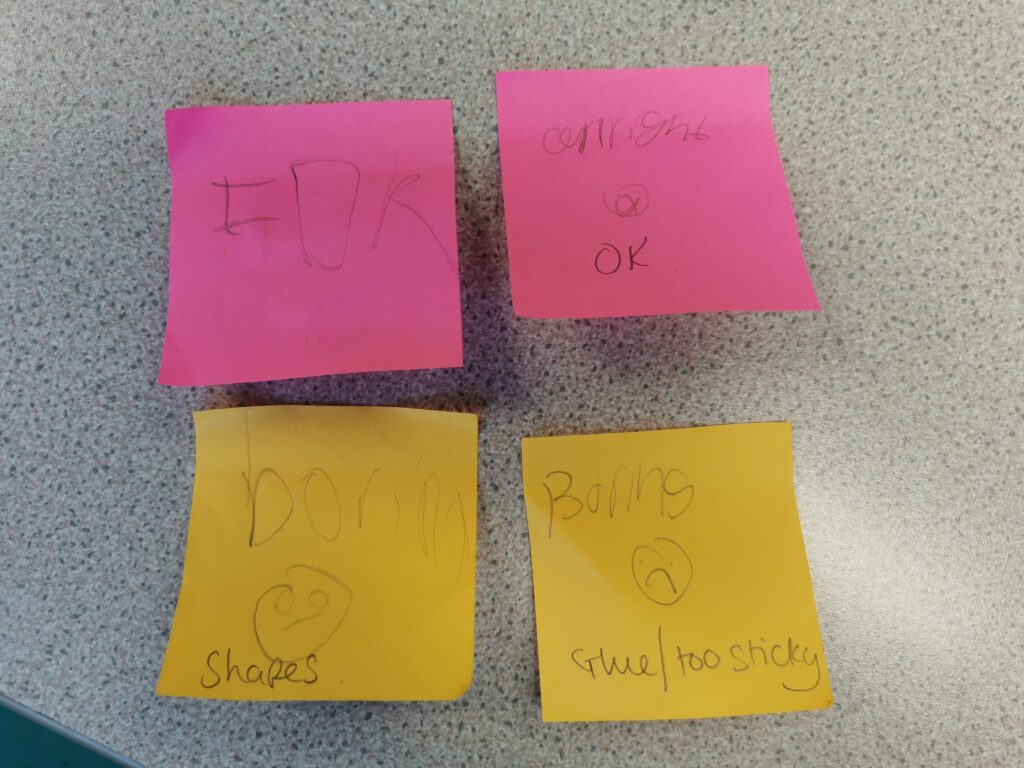 It was our penultimate session at Ashcroft School for the Making of Us this week. The workshop had its high points but didn’t entirely go as planned. Only two of our five young people were present – one appears to have dropped out altogether, another was meant to be there but has other things going on which are putting her in the wrong headspace, and the fifth person had gone home ill. Not the greatest of starts, compounded by their lack of enthusiasm for some of what we were proposing… it can often feel like pushing a boulder up a rock during these sessions, but it didn’t really get to us this time. We get it now.
It was our penultimate session at Ashcroft School for the Making of Us this week. The workshop had its high points but didn’t entirely go as planned. Only two of our five young people were present – one appears to have dropped out altogether, another was meant to be there but has other things going on which are putting her in the wrong headspace, and the fifth person had gone home ill. Not the greatest of starts, compounded by their lack of enthusiasm for some of what we were proposing… it can often feel like pushing a boulder up a rock during these sessions, but it didn’t really get to us this time. We get it now.



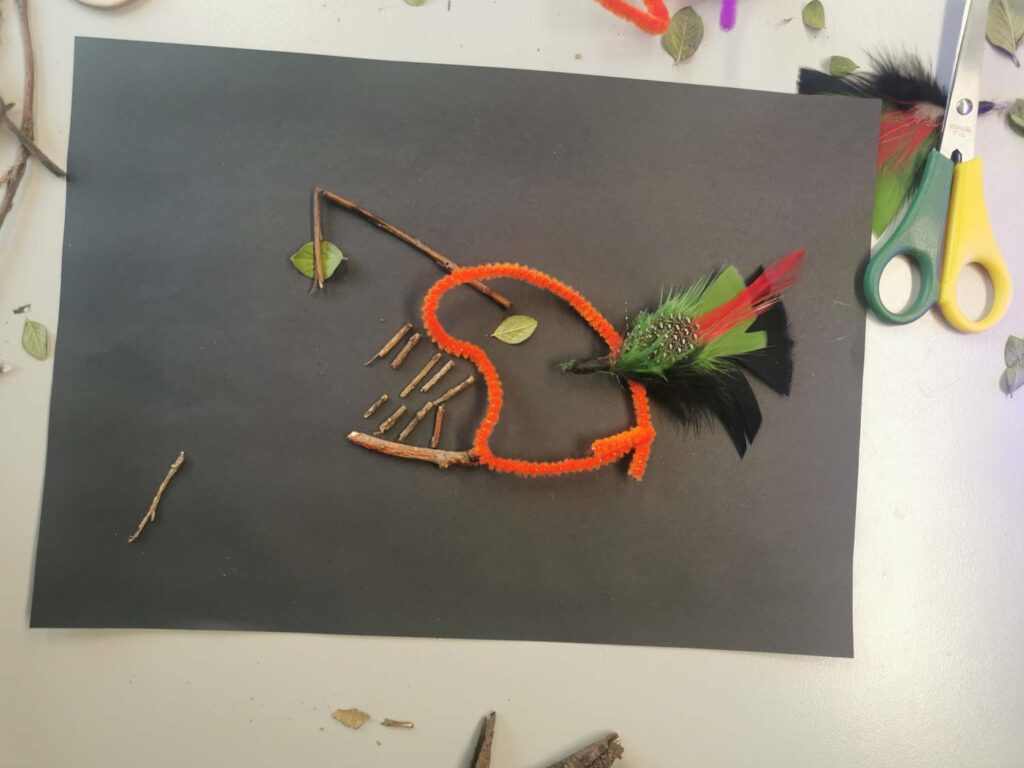







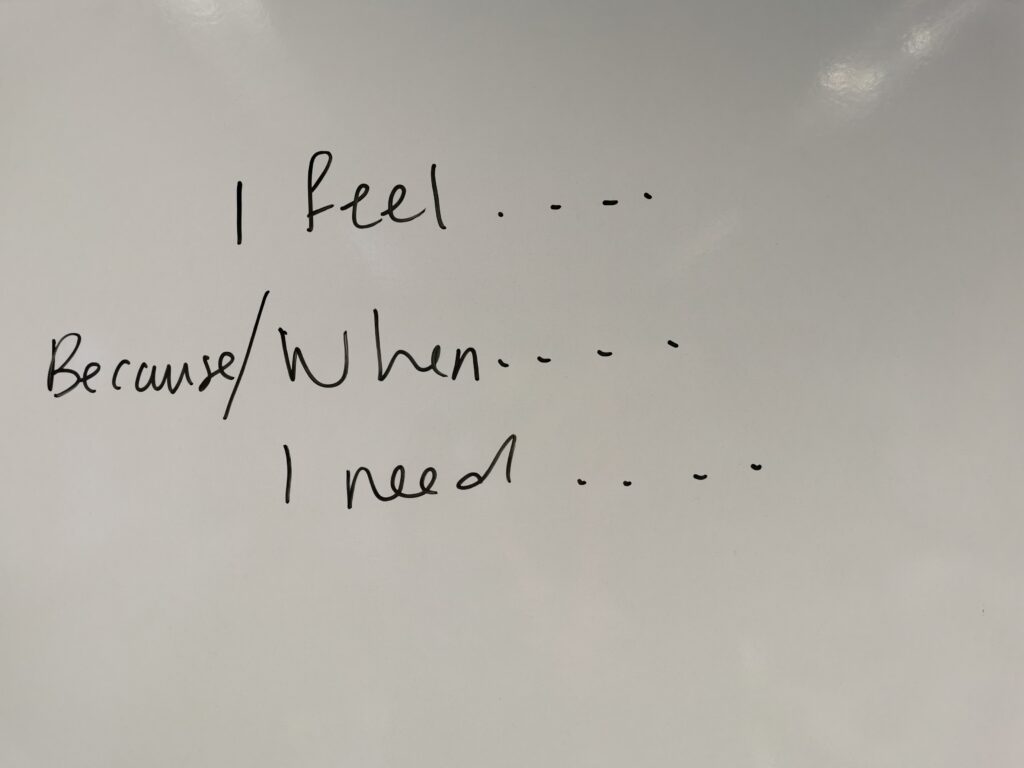 A lot has happened in two weeks on the Making of Us project we are running at the Together Trust.
A lot has happened in two weeks on the Making of Us project we are running at the Together Trust.




 Yesterday was session 4 out of 8 workshops we are delivering for Ashcroft School in Cheadle, as part of our involvement in the Making of Us programme. So we’re now halfway through, an apt point to do some reflection – with the young people and between ourselves as facilitators.
Yesterday was session 4 out of 8 workshops we are delivering for Ashcroft School in Cheadle, as part of our involvement in the Making of Us programme. So we’re now halfway through, an apt point to do some reflection – with the young people and between ourselves as facilitators.


